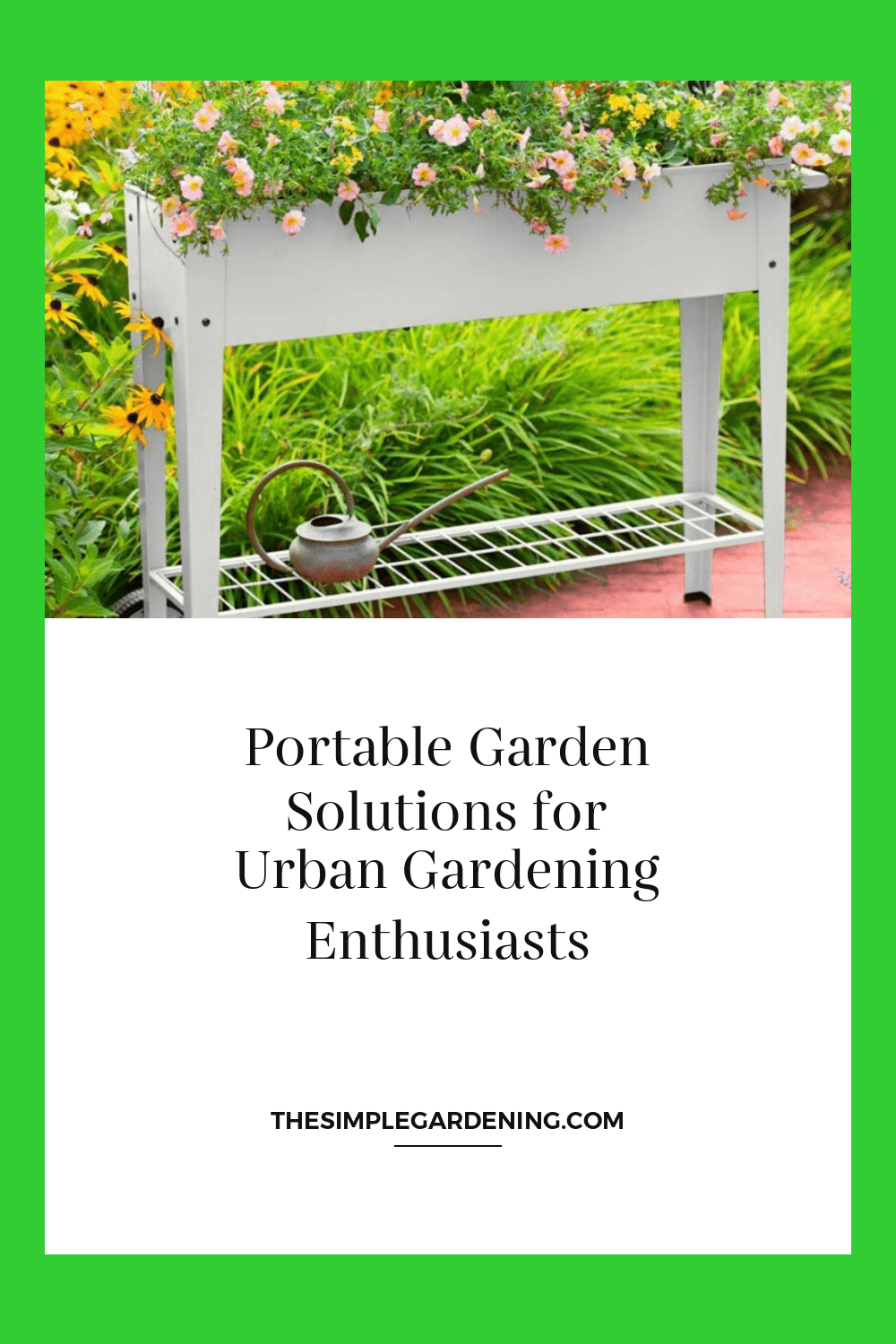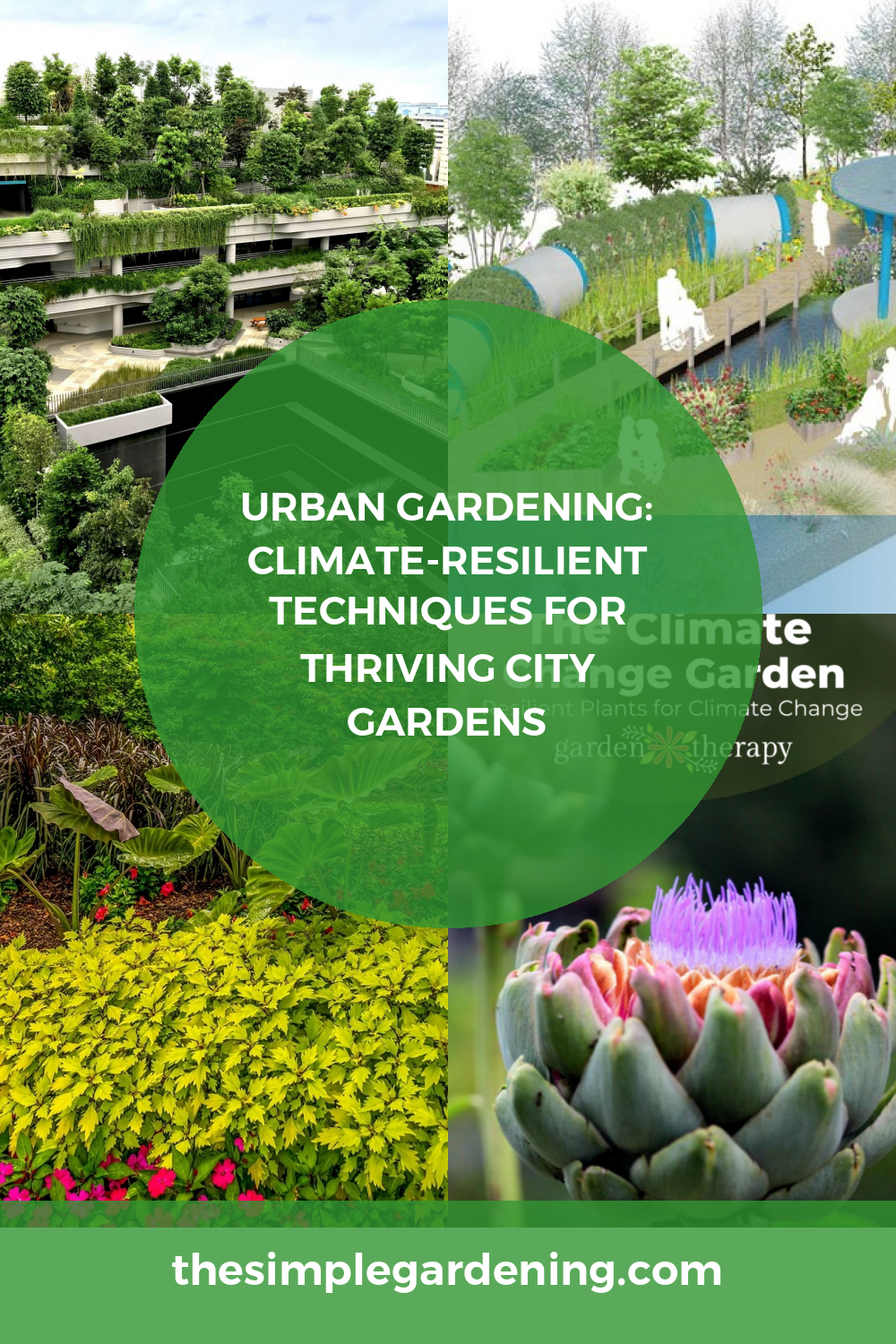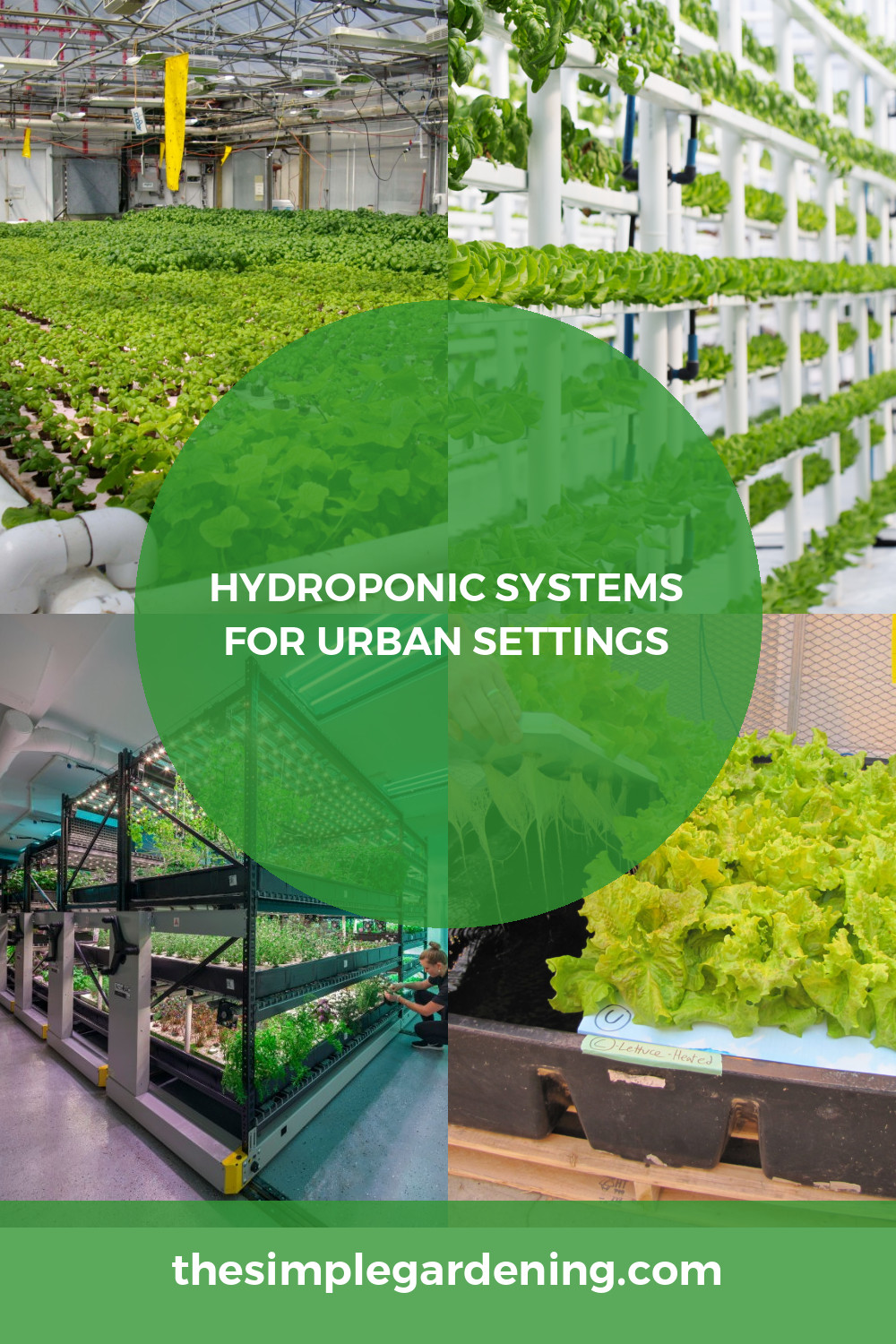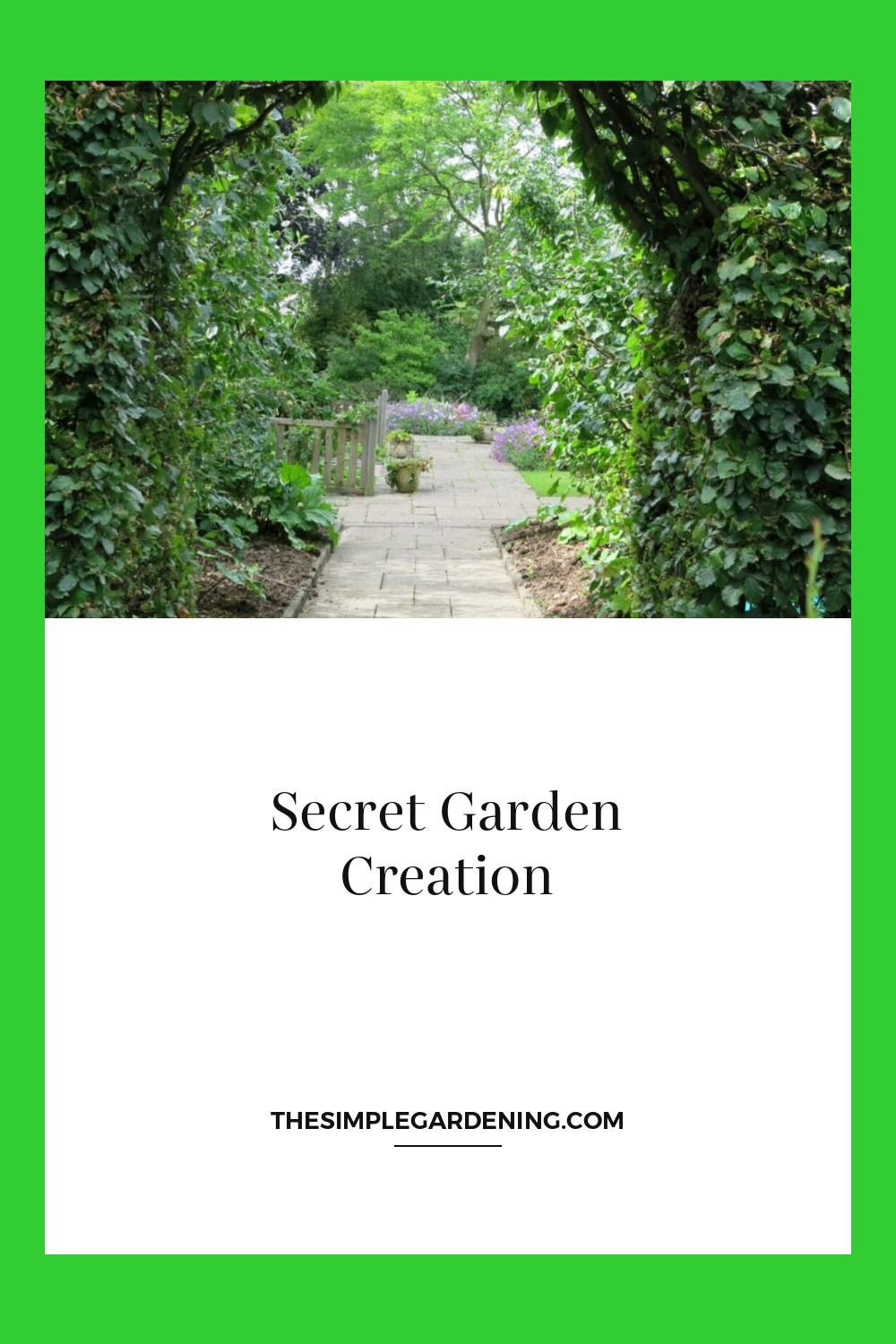Urban gardening is on the rise, and portable gardens are at the forefront of this green revolution. But what exactly are portable gardens? Simply put, they are movable garden setups designed to thrive in limited spaces, like urban balconies, patios, and rooftops. Let’s delve into why these flexible garden solutions are gaining popularity and their historical roots.
Definition and Concept of Portable Gardens
Portable gardens encompass any gardening setup that can be easily moved from one location to another. This includes containers, hanging baskets, raised beds on wheels, and vertical gardening systems. The primary goal is to maximize green space in urban environments where ground space is limited.
Benefits of Portable Gardens in Urban Settings
- Flexibility: Easily rearrange your garden setup to suit your space and preferences.
- Mobility: Move plants to capture optimal sunlight or protect them from harsh weather.
- Space Efficiency: Utilize vertical space and small areas effectively.
- Aesthetic Appeal: Enhance urban living spaces with greenery and colorful blooms.
Historical Background of Urban Gardening
Urban gardening isn’t a new concept. It dates back to ancient civilizations like Babylon, famous for its Hanging Gardens. The modern urban gardening movement took off in the 1970s, spurred by the need for sustainable living and food security in cities. Portable gardens have evolved as a practical solution to contemporary urban challenges.
Types of Portable Garden Solutions
Urban dwellers have numerous options when it comes to portable gardening. Here’s a look at the most popular types:
Container Gardening
Container gardening is the most straightforward approach. It involves growing plants in pots or containers that can be moved as needed.
Table: Types of Containers for Gardening
| Container Type | Material | Benefits | Drawbacks |
|---|---|---|---|
| Plastic Pots | Plastic | Lightweight, affordable | Can degrade over time |
| Clay Pots | Clay | Aesthetic, good for airflow | Heavy, can crack |
| Metal Containers | Metal | Durable, modern look | Can heat up, expensive |
| Fabric Pots | Fabric | Breathable, promotes root health | May degrade, needs support |
Raised Bed Gardens
Raised beds can be constructed with wheels for easy mobility, offering excellent drainage and soil quality control.
Vertical Gardens
These involve stacking plants vertically, using structures like trellises, shelves, or specially designed vertical planters.
Hydroponic Systems
Hydroponics involves growing plants in a nutrient-rich water solution, which can be set up in movable systems, perfect for urban spaces.
Window Boxes and Balcony Gardens
Designed to fit on window sills and balcony railings, these options make the most of limited urban space.
Table: Portable Garden Types and Features
| Garden Type | Ideal For | Key Features | Maintenance Level |
|---|---|---|---|
| Container Gardening | Small spaces, beginners | Versatile, easy to manage | Low |
| Raised Bed Gardens | Yards, patios | Better soil control | Medium |
| Vertical Gardens | Balconies, walls | Space-efficient | Medium |
| Hydroponic Systems | Indoors, high-yield | Soil-less, faster growth | High |
| Window Boxes | Apartments, limited space | Decorative, convenient | Low |
Choosing the Right Containers
The choice of containers can significantly impact the success of your portable garden. Here are some factors to consider:
Materials: Plastic, Clay, Metal, and Fabric
Each material has its pros and cons. Plastic is lightweight and affordable but may degrade over time. Clay pots are breathable and attractive but can be heavy and breakable. Metal containers offer a modern look but can heat up quickly and are often expensive. Fabric pots are breathable and promote healthy roots but need support to stand up.
Size and Shape Considerations
The size and shape of the container should match the plant’s root system and growth pattern. Deep-rooted plants need taller pots, while shallow-rooted ones thrive in wider, shallow containers.
Self-Watering Containers
These containers have a reservoir at the bottom that allows plants to draw water as needed, reducing the frequency of watering.
DIY Container Ideas
Get creative with your containers! Reuse items like old buckets, tins, and even shoes to create unique, eco-friendly planters.
Table: Container Materials Comparison
| Material | Pros | Cons |
|---|---|---|
| Plastic | Lightweight, inexpensive | Can degrade over time |
| Clay | Breathable, aesthetic | Heavy, can crack |
| Metal | Durable, modern look | Can heat up, expensive |
| Fabric | Promotes root health | Needs support, may degrade |
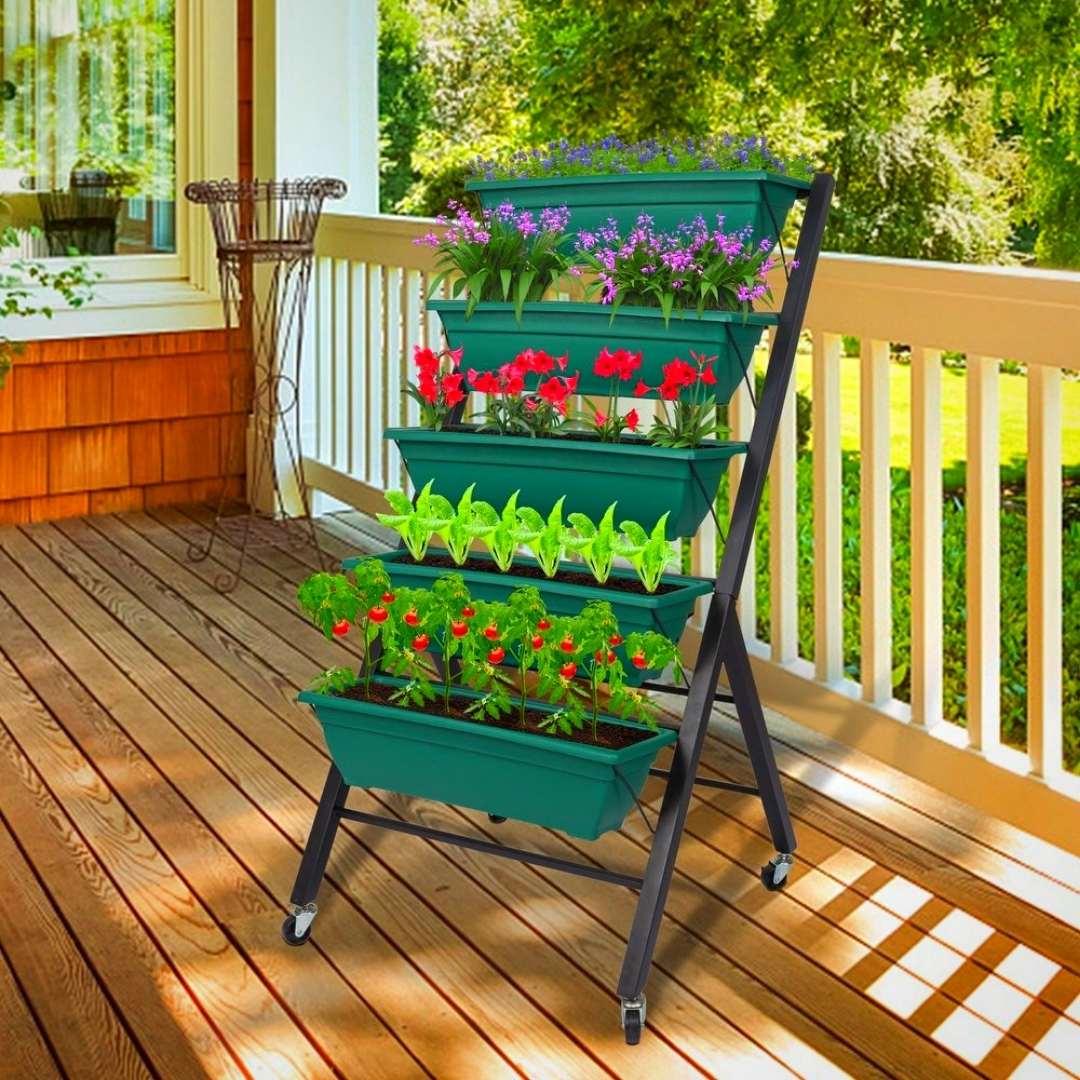
Source Image: www.bedgardening.com
Soil and Growing Mediums
The growing medium is crucial for plant health, especially in containers. Here’s what you need to know:
Soil vs. Soilless Mediums
Soil is the traditional choice, but soilless mediums like peat, coco coir, and perlite offer advantages such as better aeration and fewer pests.
Best Soil Mixes for Containers
A good container mix should be light, well-draining, and nutrient-rich. Mixing garden soil with compost and perlite is a popular choice.
Organic Growing Mediums
For organic gardening, choose mediums like coco coir, vermiculite, and organic compost, which improve soil structure and fertility.
Soil Amendments and Fertilizers
Adding organic matter like compost or manure can improve soil health. Use slow-release fertilizers to ensure steady nutrient supply.
Table: Soil and Growing Mediums
| Medium Type | Advantages | Disadvantages |
|---|---|---|
| Garden Soil | Nutrient-rich, affordable | Can be heavy, poor drainage |
| Coco Coir | Excellent aeration, eco-friendly | Needs fertilization |
| Perlite | Lightweight, improves drainage | Lacks nutrients |
| Vermiculite | Retains moisture, aerates | Can compact over time |
Plant Selection for Portable Gardens
Choosing the right plants is essential for a successful portable garden. Here are some recommendations:
Best Vegetables for Container Gardening
Vegetables like tomatoes, peppers, lettuce, and radishes thrive in containers due to their manageable size and fast growth.
Growing Herbs in Small Spaces
Herbs such as basil, thyme, and mint are perfect for small containers and provide fresh flavors for your kitchen.
Flowering Plants Suitable for Urban Gardens
Brighten up your urban space with flowering plants like marigolds, petunias, and geraniums, which are well-suited for container growth.
Perennials vs. Annuals in Portable Gardens
Perennials come back year after year, making them a long-term investment, while annuals need to be replanted each year but offer vibrant seasonal color.
Table: Recommended Plants for Portable Gardens
| Plant Type | Examples | Ideal Container Conditions |
|---|---|---|
| Vegetables | Tomatoes, Peppers, Lettuce | Deep pots, full sun |
| Herbs | Basil, Thyme, Mint | Small pots, partial sun |
| Flowering Plants | Marigolds, Petunias | Medium pots, full sun |
| Perennials | Hostas, Daylilies | Large pots, varied light |
| Annuals | Impatiens, Zinnias | Small pots, full sun |
Designing a Portable Garden
Designing your portable garden involves more than just placing pots around. Thoughtful planning and creativity can transform your space.
Space Planning and Layout
Start by measuring your available space and planning where to place each container. Consider accessibility for watering and maintenance.
Aesthetic Considerations
Mix and match plants and containers to create visual interest. Use varied heights, colors, and textures to enhance the appeal.
Integrating Portable Gardens into Existing Spaces
Incorporate your portable garden into balconies, patios, or even indoor spaces. Use shelving units, plant stands, and hanging baskets to maximize vertical space.
Creating Themed Portable Gardens (e.g., Herb Garden, Salad Garden)
Themed gardens are fun and functional. Create a salad garden with lettuce, cherry tomatoes, and cucumbers, or an herb garden with basil, parsley, and rosemary.
Table: Design Elements for Portable Gardens
| Design Element | Tips for Implementation | Benefits |
|---|---|---|
| Space Planning | Measure area, map container placement | Efficient use of space |
| Aesthetic Mix | Use varied colors, heights, textures | Visual appeal, interest |
| Vertical Integration | Shelves, hanging baskets | Maximizes vertical space |
| Themed Gardens | Group by use (herbs, salad, etc.) | Functional, cohesive design |
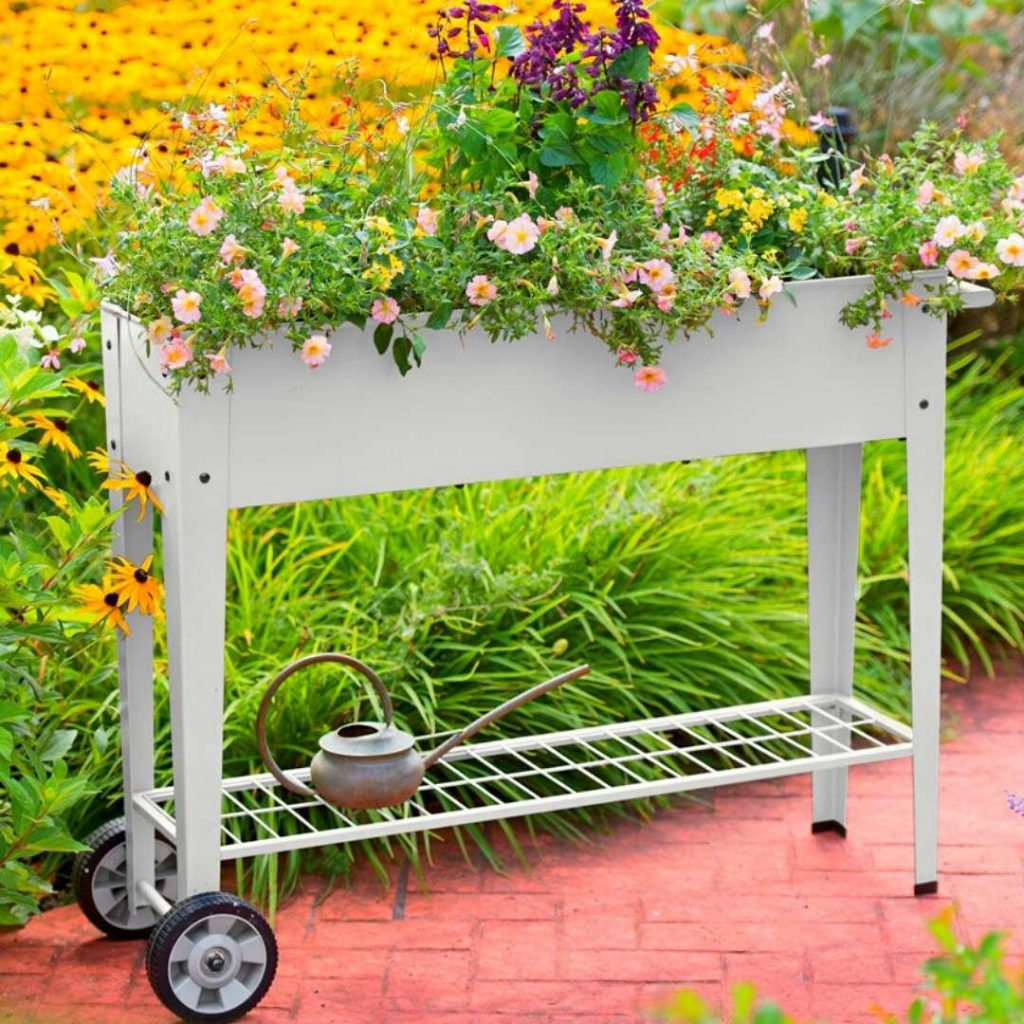
Source Image: www.bedgardening.com
Watering Systems for Portable Gardens
Proper watering is crucial for plant health, especially in containers. Let’s explore different watering systems and techniques.
Manual Watering Techniques
Use watering cans or hoses with a gentle spray to avoid damaging plants. Water early in the morning or late in the evening to reduce evaporation.
Automated Drip Irrigation Systems
Drip irrigation systems deliver water directly to the plant roots, ensuring consistent moisture levels and conserving water.
Self-Watering Pots and Planters
Self-watering containers have a built-in reservoir that provides a steady supply of water, reducing the need for frequent watering.
Water Conservation Tips
Use mulch to retain moisture, choose drought-tolerant plants, and collect rainwater for garden use.
Table: Watering Methods and Tools
| Method | Tools Required | Advantages |
|---|---|---|
| Manual Watering | Watering can, hose | Simple, low cost |
| Drip Irrigation | Drip lines, timer | Efficient, conserves water |
| Self-Watering Pots | Self-watering containers | Reduces watering frequency |
| Water Conservation | Mulch, rain barrels | Saves water, promotes health |
Lighting and Positioning
Light is a critical factor in plant growth. Here’s how to ensure your portable garden gets the light it needs.
Assessing Light Levels in Urban Spaces
Use a light meter or observe your space throughout the day to determine light levels. Most plants need at least 6 hours of direct sunlight.
Grow Lights and Their Uses
For indoor gardens or areas with insufficient natural light, grow lights can supplement and provide the necessary light spectrum for plant growth.
Best Practices for Positioning Plants
Place sun-loving plants in the brightest spots and shade-tolerant ones in lower light areas. Rotate plants regularly to ensure even growth.
Seasonal Light Variations
Adjust your garden setup with the changing seasons. Move containers to capture more light during shorter winter days.
Table: Lighting Solutions for Portable Gardens
| Light Source | Best Use Case | Advantages |
|---|---|---|
| Natural Sunlight | Outdoor balconies, patios | Free, natural growth |
| Grow Lights | Indoor gardens, low light areas | Customizable, controlled light |
| Reflective Surfaces | Indoor near windows | Enhances natural light |
| Seasonal Adjustments | All garden setups | Optimizes light year-round |
Mobility and Flexibility
The essence of portable gardens lies in their mobility. Here’s how to design for easy movement and adaptability.
Designing for Easy Mobility
Choose lightweight containers and consider adding wheels to larger planters. This makes it easier to move plants as needed.
Wheeled Containers and Platforms
Use plant caddies or build platforms with wheels to move heavier pots without strain.
Lightweight Container Options
Opt for materials like plastic or fabric that are easier to move. Ensure they are durable and suitable for your plants.
Adapting to Seasonal Changes
Move plants indoors during extreme weather conditions or reposition them to catch more light as the seasons change.
Table: Mobility Solutions for Portable Gardens
| Mobility Solution | Ideal For | Benefits |
|---|---|---|
| Lightweight Containers | All plants | Easy to move, versatile |
| Wheeled Platforms | Large pots, heavy plants | Reduces strain, convenient |
| Plant Caddies | Medium to large pots | Mobility, stability |
| Seasonal Repositioning | All garden setups | Optimizes conditions year-round |
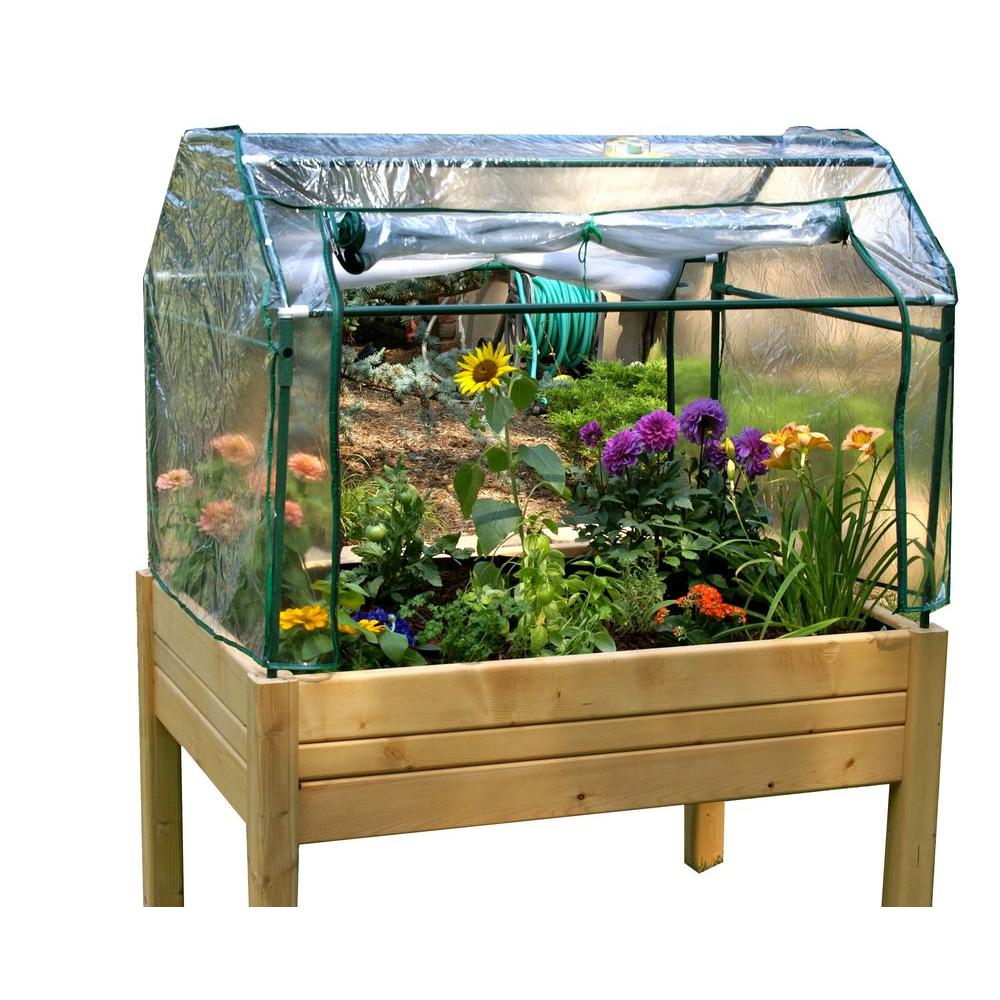
Source Image: www.homedepot.com
Pest and Disease Management
Keeping your portable garden healthy requires proactive pest and disease management.
Common Pests in Portable Gardens
Aphids, spider mites, and whiteflies are common pests that can damage your plants.
Organic Pest Control Methods
Use neem oil, insecticidal soap, and beneficial insects like ladybugs to control pests organically.
Disease Prevention and Treatment
Ensure good air circulation, avoid overwatering, and remove diseased plants promptly to prevent the spread of diseases.
Companion Planting for Pest Control
Planting certain herbs and flowers can deter pests naturally. For example, marigolds repel nematodes, while basil deters flies and mosquitoes.
Table: Organic Pest Control Methods
| Pest Type | Organic Control Method | Benefits |
|---|---|---|
| Aphids | Neem oil, ladybugs | Safe, effective |
| Spider Mites | Insecticidal soap, predatory mites | Non-toxic, efficient |
| Whiteflies | Sticky traps, neem oil | Easy to use, eco-friendly |
| Slugs | Beer traps, copper tape | Natural, low cost |
Maintenance and Care
Regular maintenance is key to a thriving portable garden. Here are some essential tasks:
Routine Maintenance Tasks
Watering, weeding, and checking for pests should be part of your daily routine. Regularly clean and inspect your containers.
Pruning and Training Plants
Prune plants to encourage growth and shape them as needed. Use stakes or trellises to support climbing plants.
Fertilization Schedules
Feed your plants with a balanced fertilizer every few weeks during the growing season. Use organic fertilizers for a sustainable approach.
Troubleshooting Common Problems
Identify and address issues like yellowing leaves, slow growth, and poor flowering promptly to keep your garden healthy.
Table: Routine Maintenance Tasks
| Task | Frequency | Tools Needed |
|---|---|---|
| Watering | Daily or as needed | Watering can, hose |
| Weeding | Weekly | Hand tools, gloves |
| Pruning | Monthly or as needed | Pruning shears, stakes |
| Fertilizing | Every 2-4 weeks | Fertilizer, watering can |
Sustainability Practices
Sustainability is crucial in urban gardening. Here’s how to make your portable garden eco-friendly:
Using Recycled and Upcycled Materials
Create planters from old containers, pallets, or even shoes. This reduces waste and adds character to your garden.
Organic Gardening Techniques
Avoid chemical pesticides and fertilizers. Use compost and natural pest control methods to keep your garden healthy.
Composting in Small Spaces
Compost kitchen scraps and garden waste in a small compost bin or worm farm to create nutrient-rich soil for your plants.
Reducing Waste and Maximizing Resources
Reuse water from household tasks like rinsing vegetables. Mulch your plants to retain moisture and reduce water usage.
Table: Sustainable Gardening Practices
| Practice | Benefits | Implementation |
|---|---|---|
| Recycled Materials | Reduces waste, eco-friendly | Use old containers, upcycle |
| Organic Techniques | Healthier plants, eco-friendly | Use compost, natural pest control |
| Small Space Composting | Creates rich soil, reduces waste | Use small compost bins, worm farms |
| Water Reuse | Conserves water, efficient use | Reuse greywater, mulch |
Case Studies and Success Stories
Learn from the experiences of others to inspire and improve your own urban gardening journey.
Successful Urban Gardening Projects
Cities like New York and San Francisco have embraced urban gardening, transforming rooftops and vacant lots into lush green spaces.
Personal Stories from Urban Gardeners
Hear from urban gardeners who have turned their tiny balconies into productive gardens, growing everything from herbs to vegetables.
Community Gardening Initiatives
Community gardens bring people together, providing fresh produce and green space in urban neighborhoods.
Lessons Learned from Experienced Gardeners
Experienced gardeners share their tips and tricks for overcoming common challenges and maximizing yield in small spaces.
Table: Inspirational Urban Gardening Examples
| Project Name | Location | Key Features | Impact |
|---|---|---|---|
| Brooklyn Grange | New York, USA | Rooftop farm, organic produce | Community engagement, fresh food |
| City Blossoms | Washington D.C. | Youth-focused, educational | Youth education, green spaces |
| Rooftop Republic | Hong Kong | Urban farming, sustainability | Sustainable food production |
| Growing Chefs! | Vancouver, Canada | School gardens, education | Child education, healthy eating |

Source Image: www.pinterest.com
Portable Garden Solutions
Tools and Accessories for Portable Gardening
The right tools can make gardening easier and more enjoyable.
Essential Gardening Tools for Small Spaces
Basic tools like trowels, pruners, and watering cans are essential for any gardener. Choose compact, multi-purpose tools for small spaces.
Innovative Gardening Gadgets
Consider investing in smart gardening gadgets like moisture sensors and automatic watering systems to simplify your gardening tasks.
Storage Solutions for Tools and Supplies
Use vertical storage solutions like wall-mounted racks and pegboards to keep your tools organized and accessible.
DIY Tool Maintenance
Keep your tools in top shape with regular cleaning and sharpening. Store them properly to extend their lifespan.
Table: Essential Gardening Tools
| Tool | Purpose | Compact Alternatives |
|---|---|---|
| Trowel | Digging, planting | Folding trowel |
| Pruners | Cutting, pruning | Multi-purpose pruner |
| Watering Can | Watering plants | Collapsible watering can |
| Garden Gloves | Hand protection | Lightweight, flexible gloves |
DIY Projects and Creative Ideas
Get creative with your portable garden! Here are some fun DIY projects to try:
Building Your Own Containers
Construct unique containers from wood, metal, or even recycled materials. Personalize them with paint and decorations.
Creating Vertical Gardens from Pallets
Turn old pallets into vertical gardens by attaching pots or planting directly into the pallet slots.
Upcycling Household Items for Gardening
Use old jars, cans, and other household items as planters. This not only recycles materials but also adds a unique touch to your garden.
Crafting Decorative Elements for Gardens
Make garden decorations like painted rocks, wind chimes, and plant markers to add personality to your garden space.
Table: DIY Gardening Projects
| Project | Materials Needed | Steps |
|---|---|---|
| Wooden Planters | Wood, nails, paint | Cut wood, assemble, paint |
| Pallet Vertical Garden | Old pallet, pots, soil | Clean pallet, attach pots |
| Upcycled Planters | Jars, cans, paint | Clean items, paint, plant |
| Garden Decorations | Rocks, paint, string | Paint rocks, assemble chimes |
Educational Resources and Further Learning
Expand your gardening knowledge with these resources:
Books and Guides on Urban Gardening
Books like “The Edible Balcony” by Alex Mitchell and “Urban Gardening for Dummies” offer valuable insights and tips.
Online Courses and Tutorials
Websites like Coursera and Udemy offer online courses on gardening topics ranging from basic techniques to advanced hydroponics.
Local Workshops and Community Programs
Join local workshops and community programs to learn hands-on and connect with other gardeners.
Gardening Apps and Digital Tools
Apps like PlantSnap and Gardenize help you identify plants, track growth, and manage your garden effectively.
Table: Gardening Educational Resources
| Resource Type | Examples | Benefits |
|---|---|---|
| Books | “The Edible Balcony” | Comprehensive guides |
| Online Courses | Coursera, Udemy | Flexible learning |
| Local Workshops | Community centers, gardening clubs | Hands-on experience |
| Gardening Apps | PlantSnap, Gardenize | Plant identification, tracking |
Urban Gardening and Community Building
Urban gardening can bring people together and strengthen communities.
Creating Community Gardens
Community gardens provide shared space for growing food and flowers, fostering community spirit and cooperation.
Urban Gardening Clubs and Networks
Join local clubs and networks to share knowledge, resources, and support with fellow urban gardeners.
Sharing Resources and Knowledge
Exchange seeds, tools, and tips with neighbors to build a supportive gardening community.
The Social Impact of Urban Gardening
Urban gardening can improve mental health, provide fresh food, and create green spaces that enhance urban living.
Table: Community Building through Gardening
| Initiative | Benefits | Examples |
|---|---|---|
| Community Gardens | Shared space, fresh food | Local allotments, neighborhood gardens |
| Gardening Clubs | Networking, resource sharing | Local clubs, online forums |
| Resource Sharing | Tools, seeds, knowledge | Seed swaps, tool libraries |
| Social Impact | Mental health, green spaces | Improved well-being, urban beautification |

Source Image: www.pinterest.co.uk
Challenges and Solutions in Urban Gardening
Urban gardening comes with its own set of challenges. Here’s how to tackle them:
Space Constraints and Creative Solutions
Use vertical gardening, hanging baskets, and compact containers to make the most of limited space.
Dealing with Urban Pollution
Use raised beds and containers to avoid soil contamination. Plant air-purifying plants to improve air quality.
Security and Vandalism Issues
Secure your garden with fencing and choose locations that are visible but not easily accessible to deter vandalism.
Overcoming Legal and Zoning Restrictions
Check local regulations before starting your garden. Join community efforts to advocate for more green spaces.
Table: Challenges and Solutions in Urban Gardening
| Challenge | Solution | Tips |
|---|---|---|
| Space Constraints | Vertical gardening, compact containers | Use all available space |
| Urban Pollution | Raised beds, air-purifying plants | Avoid contaminated soil |
| Security Issues | Fencing, secure locations | Choose visible but safe spots |
| Legal Restrictions | Research, community advocacy | Know local laws, get involved |
Future Trends in Portable Urban Gardening
The future of urban gardening is bright, with new trends and technologies emerging.
Technological Innovations
Smart gardening tools like automated watering systems and AI-powered plant monitors are making gardening easier and more efficient.
Emerging Gardening Techniques
Techniques like aquaponics, aeroponics, and permaculture are gaining popularity for their sustainability and high yield.
The Role of Urban Gardening in Sustainable Cities
Urban gardening is becoming a key component of sustainable city planning, contributing to food security and green space.
Predictions for the Future of Urban Agriculture
Expect to see more rooftop gardens, community gardens, and urban farms as cities prioritize green initiatives and sustainable living.
Table: Future Trends in Urban Gardening
| Trend | Description | Potential Impact |
|---|---|---|
| Smart Gardening Tools | Automated systems, AI monitors | Increased efficiency, convenience |
| New Techniques | Aquaponics, aeroponics | Sustainable, high yield |
| Sustainable Cities | Urban planning, green spaces | Food security, improved living |
| Future Predictions | More urban farms, rooftop gardens | Enhanced sustainability |

Source Image: www.pinterest.com.au
Conclusion and Call to Action
Urban gardening is a rewarding and sustainable way to bring green space into city life. Whether you’re a beginner or an experienced gardener, there’s always something new to learn and explore in the world of portable gardens.
Recap of Key Points
We’ve covered everything from choosing containers and soil to plant selection, maintenance, and innovative trends in urban gardening.
Encouragement to Start Urban Gardening
Don’t wait! Start small with a few containers on your balcony or windowsill, and watch your urban garden grow.
Resources for Getting Started
Check out the books, online courses, and community resources mentioned to kickstart your urban gardening journey.
Community Engagement and Support Networks
Join local gardening clubs and online forums to connect with other urban gardeners and share your experiences.
Table: Getting Started with Urban Gardening
| Step | Description | Resources |
|---|---|---|
| Choose Containers | Select suitable containers | Local garden center, online stores |
| Select Plants | Pick plants for your space | Gardening books, online guides |
| Learn Techniques | Educate yourself on gardening | Online courses, workshops |
| Join Community | Connect with other gardeners | Local clubs, online forums |
Ready to transform your urban space with a portable garden? Dive in, get your hands dirty, and enjoy the fruits (and veggies) of your labor!
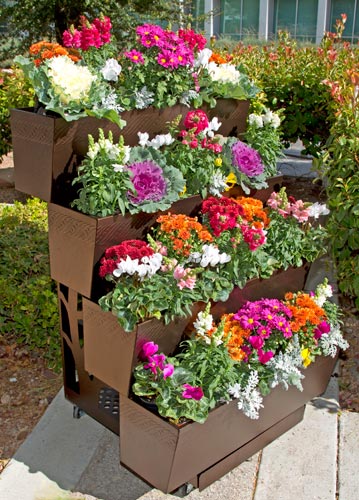
Source Image: mobilegro.com

Source Image: www.pinterest.com

